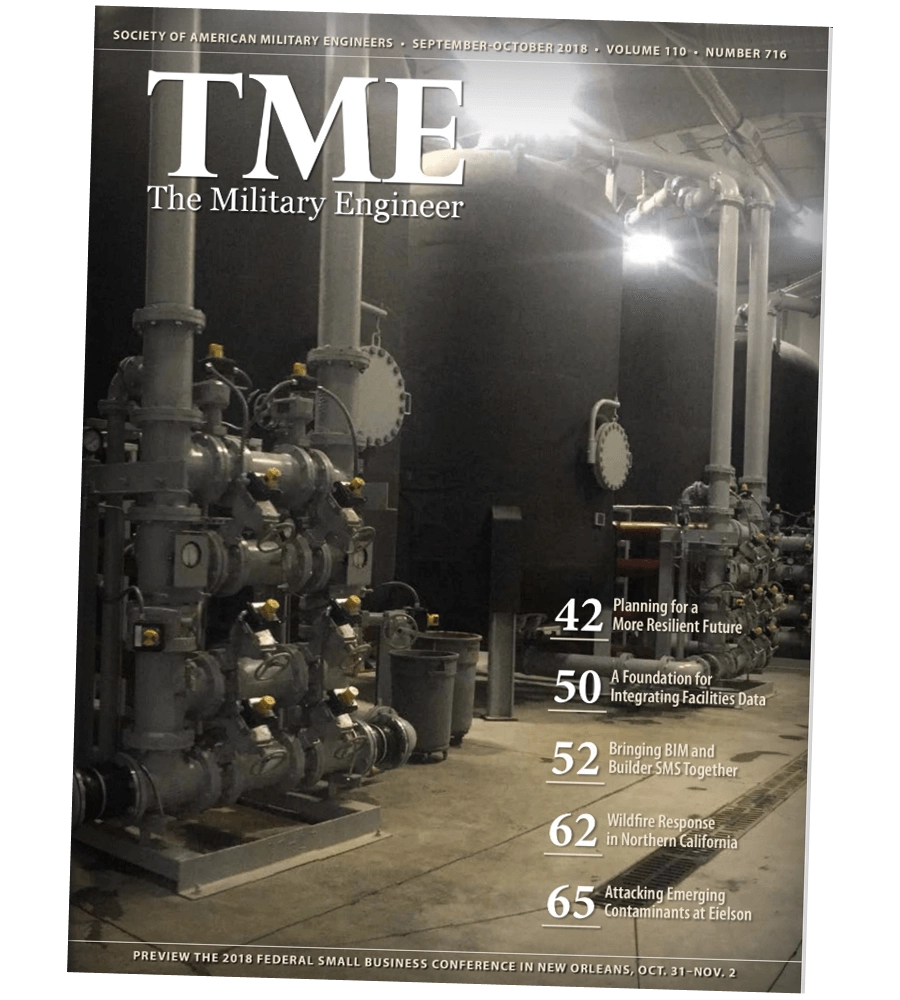Job Order Contracting (JOC) was developed in the Department of Defense (DoD). The United States Air Force refers to JOC as Simplified Acquisition of Base Engineering Requirements (SABER). Gordian’s founder Harry H. Mellon created JOC in the 1980s as an innovative contracting methodology to deal with routine projects. JOC relies on a Unit Price Book (UPB) to price individual delivery orders in an Indefinite-Delivery, Indefinite Quantity (IDIQ) contract, following a streamlined process.
JOC increases performance and responsiveness while providing great value to the Federal government. Driven by growing defense needs around Sustainment, Restoration and Modernization (SRM) programs, JOC is positioned to evolve into a more powerful project execution tool. In the September-October 2018 issue of TME, S. Richard Benton, P.E., F.ASCE, a Consultant at Design-Build Institute of America, Christopher Reinhardt, PMP, Chief Military Programs, USACE NY District, and Gordian’s own Lisa Cooley, Director of Federal Sales, define what the next generation of contracts will look like for DoD and Federal users, including the data and technology tools needed to support them.
Expanding the Applicability of JOC
JOC in non-Federal applications frequently leverages a design-build approach. DoD is limited by the strict definition of JOC for projects with “incidental design” only. A new breed of contracts leverages the value of unit pricing and a collaborative design process while also honoring the sanctity of a qualifications-based selection process. The US Army Corps of Engineers Savannah District is leading the way with design-build single award task order contracts (SATOCs) which incorporate full design-build capabilities. SATOCs leverage a unit price basis to ensure fair and accurate pricing and can be used for larger and more complex projects.
Multiple award task order contracts (MATOC) have typically not relied on unit pricing, but now many practitioners are finding value in mandating a unit price basis for these programs, providing more price transparency and a methodology for negotiating change orders.
Unit Prices Enter the Data Revolution
In a dynamic construction cost environment, having the most accurate costs to govern contracting is critical. New JOC-specific datasets provide better pricing control by including updated task descriptions, quantity modifiers and integrated terms and conditions. These datasets also incorporate owner-specific line items and requirements. More frequent and localized pricing updates increase accuracy and thus competitiveness on these long-term contracts. Evolving technology provides tools for better managing large and precise datasets. These technological advancements provide for easy auditability and increasing staff efficiency for both government and contractors.
Integrating Job Order Contracting
JOC is no longer a closed system for Federal customers. Projects are identified as part of a larger asset management strategy. JOC data and technology must interface with other systems, automatically flowing information back and forth to reduce the information management burden on overstretched facilities staff.
While new data and technology developments are driving the evolution of JOC, staying faithful to the relational contracting focus that historically made JOC successful will also be critical to the continuing value of the delivery method.
Read the full article “Next-Gen Job Order Contracting.”
Learn more about Gordian’s Job Order Contracting Federal – an innovative support system for Federal Job Order Contracts.






